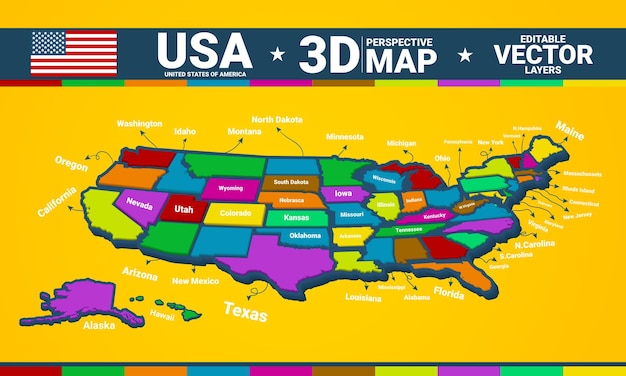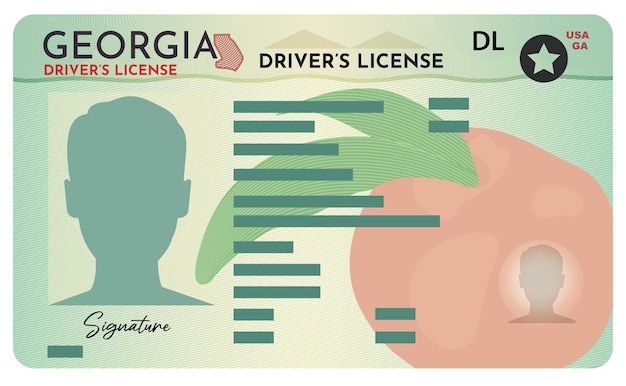Voter ID Laws 2025: Know What You Need to Vote

Voter ID laws are regulations in the United States that require voters to show identification when voting, and in 2025, understanding these requirements is crucial to ensure every eligible citizen can exercise their right to vote; the specific forms of identification accepted vary by state, making it essential for voters to check their local regulations.
Navigating the landscape of voter ID laws can seem daunting, especially as we approach the 2025 elections. Understanding which forms of identification are accepted is crucial to ensuring your voice is heard. This article will guide you through the essentials, helping you prepare and participate in the democratic process with confidence.
Voter ID Laws: An Overview for 2025
Voter ID laws have become a significant part of the electoral process in the United States. These laws mandate that voters present some form of identification before casting their ballot. The specifics of these laws vary from state to state. Understanding these variations is vital for every voter to ensure they comply with their state’s requirements.
These laws have stirred considerable debate, with proponents arguing that they safeguard the integrity of elections by preventing voter fraud. Opponents, however, contend that these laws disproportionately affect certain demographics, such as minorities, the elderly, and low-income individuals, potentially suppressing voter turnout.

Types of Voter ID Laws
Across the United States, voter ID laws can be categorized into several types. Here’s a breakdown:
- Strict Photo ID Laws: These laws require voters to present a valid photo identification, such as a driver’s license or passport, to vote. If a voter does not have an accepted photo ID, they may be required to cast a provisional ballot and take additional steps to ensure their vote is counted.
- Non-Strict Photo ID Laws: In states with non-strict photo ID laws, voters are asked to present a photo ID, but if they cannot, they can still vote by signing an affidavit or using another alternative method.
- Non-Photo ID Laws: These laws allow voters to present non-photo identification, such as a utility bill or bank statement, to verify their identity. These laws are less stringent than those requiring photo IDs.
- No ID Required: In some states, no identification is required to vote. Voters are typically identified through other means, such as by matching their signature to the one on file.
Each type of law impacts voters differently, influencing ease of access to voting and affecting overall voter turnout.
In conclusion, understanding the types of voter ID laws is essential for every voter. Knowing whether your state requires strict photo ID, a non-strict photo ID, non-photo ID, or no ID at all will help you prepare adequately for the voting process.
Acceptable Forms of Identification in 2025
One of the most crucial aspects of voter ID laws is knowing what forms of identification are considered acceptable. These can vary significantly from one state to another, making it essential for voters to be informed about their local regulations.
Generally, acceptable forms of identification include government-issued photo IDs, such as driver’s licenses, state-issued ID cards, and passports. However, some states may also accept other forms of identification, such as student IDs, employee IDs, and even utility bills or bank statements.
Commonly Accepted Photo IDs
Photo IDs are the most widely accepted form of identification under voter ID laws. Here are some of the most common types:
- Driver’s License: A valid driver’s license is almost universally accepted as a form of identification for voting. It is a government-issued photo ID that includes the voter’s name, address, and photograph.
- State-Issued ID Card: Similar to a driver’s license, a state-issued ID card is a photo identification card issued by the state government to residents who do not drive.
- U.S. Passport: A U.S. passport is a valid form of identification for voting in most states. It is a federal government-issued photo ID that includes the voter’s name, photograph, and other identifying information.
- Military ID: Active duty and retired military personnel can use their military ID cards as proof of identification when voting.
Voters should ensure that their photo ID is current and valid. An expired photo ID may not be accepted in some states.
In summary, knowing the acceptable forms of identification in your state is crucial for participating in elections. Whether it’s a driver’s license, state-issued ID card, U.S. passport, or military ID, being prepared with the correct documentation will ensure a smooth and successful voting experience.
States with Strict Photo ID Laws
Several states have implemented strict photo ID laws that require voters to present specific forms of photo identification to vote. These laws are among the most stringent in the country and have been the subject of much debate and legal challenges.
States with strict photo ID laws include Texas, Georgia, Indiana, and Wisconsin. In these states, voters must present an accepted form of photo identification, such as a driver’s license, state-issued ID card, or U.S. passport. If a voter does not have an accepted photo ID, they may be required to cast a provisional ballot and take additional steps to ensure their vote is counted.

Consequences of Not Having a Photo ID
The consequences of not having a valid photo ID in states with strict photo ID laws can be significant. Here are some potential outcomes:
- Provisional Ballot: If a voter does not have an accepted photo ID, they may be allowed to cast a provisional ballot. However, the ballot will only be counted if the voter provides acceptable identification to election officials within a specified timeframe.
- Inability to Vote: In some cases, if a voter cannot provide acceptable photo identification, they may be denied the right to vote altogether. This can be particularly problematic for individuals who lack access to photo identification, such as those without a driver’s license or passport.
- Additional Hurdles: Even if a voter is allowed to cast a provisional ballot, they may face additional hurdles in ensuring their vote is counted. This can include traveling to the election office to present identification or providing additional documentation to verify their identity.
It’s important to know how to check your registration status. Ensure that all your information is accurate and up to date.
In conclusion, states with strict photo ID laws require voters to present specific forms of photo identification to vote. The consequences of not having a valid photo ID can be significant, potentially impacting a voter’s ability to participate in the democratic process. Being aware of these requirements and ensuring you have the necessary identification is crucial.
Alternatives to Photo ID
For voters who do not have or cannot obtain a photo ID, there are often alternative options available to prove their identity at the polls. These alternatives vary by state but can include non-photo identification documents or the use of affidavits.
Many states with non-strict photo ID laws allow voters to present alternative forms of identification, such as utility bills, bank statements, or government documents that include the voter’s name and address. These documents can be used to verify a voter’s identity in lieu of a photo ID.
Non-Photo Identification Documents
Here are some examples of non-photo identification documents that may be accepted as alternatives to photo ID:
- Utility Bill: A current utility bill, such as a water, gas, or electric bill, can be used to verify a voter’s address.
- Bank Statement: A recent bank statement can also be used to verify a voter’s address and identity.
- Government Document: Any official document issued by a government agency that includes the voter’s name and address may be accepted.
Always confirm with your local election officials to be sure.
In summary, while photo identification is often the primary requirement under voter ID laws, alternative options exist for voters who do not have or cannot obtain a photo ID. By being aware of these alternatives and the specific requirements in your state, voters can ensure they are able to exercise their right to vote.
Impact of Voter ID Laws on Different Demographics
Voter ID laws have a varied impact on different demographic groups. While proponents argue that these laws are necessary to prevent voter fraud, critics contend that they disproportionately affect certain populations, leading to decreased voter turnout.
Studies have shown that voter ID laws can have a particularly significant impact on minority voters, low-income individuals, the elderly, and students. These groups are often less likely to have access to the required forms of identification or may face additional barriers to obtaining them.
Disproportionate Impact
Here are some ways in which voter ID laws can disproportionately affect different demographics:
- Minority Voters: Minority voters are often less likely to have a driver’s license or other forms of photo identification, due to factors such as poverty, lack of access to transportation, and historical discrimination.
- Low-Income Individuals: Low-income individuals may face financial barriers to obtaining the required forms of identification, such as fees for obtaining a driver’s license or state-issued ID card.
- Elderly Voters: Elderly voters may have difficulty obtaining or renewing photo identification, particularly if they no longer drive or have limited mobility.
- Students: Students who have recently moved to a new state may not have had time to obtain a local driver’s license or state-issued ID card.
By understanding the potential impact of voter ID laws on different demographics, we can work to ensure that all eligible voters have equal access to the ballot box.
In conclusion, voter ID laws can have a disproportionate impact on minority voters, low-income individuals, the elderly, and students. Recognizing these disparities is essential for promoting fair and inclusive elections.
How to Obtain Necessary Identification
For individuals who need to obtain the necessary identification to comply with voter ID laws, there are several steps they can take. These steps may include gathering required documents, visiting the appropriate government agencies, and understanding the associated costs.
The process for obtaining a driver’s license or state-issued ID card typically involves providing proof of identity, residency, and Social Security number. Voters may also need to pass a vision test and pay a fee. The specific requirements vary by state.
Steps to Obtain Identification
Here are some general steps that individuals can take to obtain the necessary identification for voting:
- Gather Required Documents: Collect all the necessary documents, such as proof of identity, proof of residency, and Social Security card.
- Visit the Appropriate Government Agency: Visit your local Department of Motor Vehicles (DMV) or other relevant government agency to apply for a driver’s license or state-issued ID card.
- Pay the Required Fee: Be prepared to pay the required fee for obtaining the identification. Fee waivers may be available for low-income individuals.
It’s also important to stay informed about voter registration deadlines. Make sure to register well in advance of the election.
In summary, obtaining the necessary identification to comply with voter ID laws involves gathering required documents, visiting the appropriate government agencies, and understanding the associated costs. By taking these steps, voters can ensure they are prepared to exercise their right to vote.
Preparing for the 2025 Elections
As the 2025 elections approach, it is essential for voters to prepare themselves by staying informed about voter ID laws, checking their registration status, and gathering the necessary identification. By taking these steps, voters can ensure they are able to participate in the democratic process without any unnecessary obstacles.
Staying informed about voter ID laws involves understanding the specific requirements in your state, including the acceptable forms of identification and any alternative options available. This information can typically be found on your state’s election website or by contacting your local election officials.
Key Preparations for Voters
To ensure a smooth voting experience in the 2025 elections, consider the following:
- Check Your Registration Status: Verify that you are registered to vote and that your registration information is accurate and up to date.
- Gather Necessary Identification: Collect the required forms of identification, such as a driver’s license, state-issued ID card, or U.S. passport.
- Stay Informed: Stay informed about any changes to voter ID laws or election procedures in your state.
With the right preparation, you can make sure your voice is heard.
In conclusion, preparing for the 2025 elections involves staying informed about voter ID laws, checking your registration status, and gathering the necessary identification. By taking these steps, voters can ensure they are able to participate in the democratic process.
| Key Point | Brief Description |
|---|---|
| 🆔 Voter ID Laws | Regulations requiring voters to show identification at the polls. |
| 🛂 Accepted IDs | Driver’s licenses, state-issued IDs, passports are common. |
| 📍 Strict vs. Non-Strict | Strict requires photo ID, non-strict allows alternatives. |
| 🗳️ Impact | Can affect turnout, especially among minorities and low-income groups. |
Frequently Asked Questions (FAQ)
▼
A voter ID law requires voters to present some form of identification before casting their ballot. These laws vary by state but generally aim to verify voter identity.
▼
Commonly accepted IDs include driver’s licenses, state-issued ID cards, U.S. passports, and military IDs. Some states may also accept student IDs or tribal IDs.
▼
In some states, you can use non-photo IDs like utility bills or bank statements. Others may allow you to sign an affidavit or cast a provisional ballot.
▼
Some states offer free state-issued IDs for voting purposes. Contact your local election office for information on how to apply and what documents are needed.
▼
Visit your state’s election website or contact your local election officials. You can also consult non-partisan organizations that provide voter information.
Conclusion
Understanding voter ID laws is crucial for participating effectively in US elections. By familiarizing yourself with the specific requirements in your state and ensuring you have the necessary identification, you can help safeguard your right to vote and contribute to a fair democratic process. Stay informed, get prepared, and make your voice heard in the 2025 elections.
